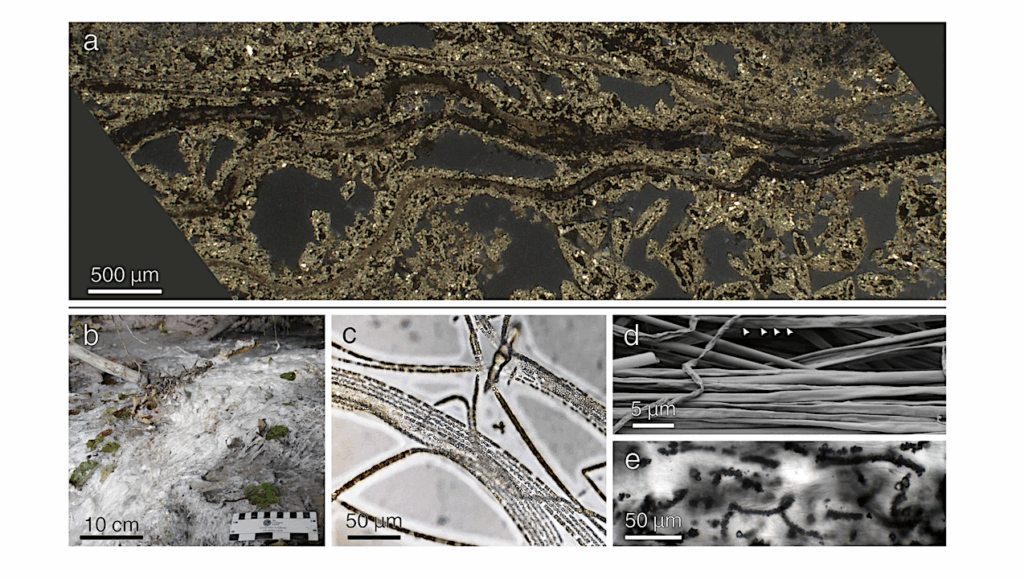AwayTeams: Human-occupied Vehicle Alvin Successfully Completes Science Verification

The human-occupied submersible Alvin is ready to return to scientific research at its newly certified maximum depth of 6500 meters (4 miles).
That’s the conclusion of a team of scientists who have spent the past three weeks taking the iconic sub through its paces at locations at the Puerto Rico Trench and Mid-Cayman Rise, testing its scientific and engineering systems to ensure they are capable of supporting the demands of deep-sea sample and data collection.
“We set a high bar for Alvin and it easily met or exceeded our expectations,” said Woods Hole Oceanographic Institution (WHOI) Associate Scientist Anna Michel, chief scientist of the National Deep Submergence Facility that operates Alvin. “Alvin is ready for science.”
Michel and University of Rhode Island geophysicist Adam Soule led Alvin’s Science Verification Expedition, which left San Juan, Puerto Rico, on July 26 and completed five scientific dives in the Puerto Rico Trench. Those dives focused on the sub’s ability to support multi-disciplinary research including geological sampling and observation among the towering cliffs formed by the collision between the North American and Caribbean tectonic plates and biological sampling at abyssal and hadal depths. Scientists were able to make direct observations and collect samples of exposed oceanic crust, deep channels carved into the Puerto Rican platform, and seafloor organisms, some of which were the deepest known examples of their species.
After a short stop in San Juan to exchange scientific crew, Alvin’s support ship, the research vessel Atlantis, proceeded to a region south of the Cayman Islands known as the Cayman Rise, where the two plates are separating at a rate of about 15 millimeters (0.5 inch) per year. There, scientists conducted another nine dives, focusing on chemical and biological sampling around hydrothermal vent and seep sites, including at the Beebe Vent Field—the hottest and deepest known hydrothermal vents on Earth.
“These were complicated dives in complex locations that posed a test not just of the sub, but of the people who operate it and who make the science possible, as well,” said Soule. “Their skill and recent upgrades to the sub meant we were able to make fundamental new discoveries while also confirming its operation.”
The upgrades were funded by the National Science Foundation (NSF), installed during an overhaul period that began in March 2020, and built on additional improvements completed in 2014. The most recent round of upgrades included new titanium ballast spheres, upgraded hydraulic system, new thrusters and motor controllers, updated command-and-control and navigation systems, and a new 4K imaging system. Because Alvin is owned by the U.S. Navy, it then completed a three-week sea trial in collaboration with the Naval Sea Systems Command (NAVSEA), which oversees the safety of all ships and submarines in the fleet, and culminated in official certification to operate at depths to 6500 meters.
In total, Alvin completed 14 dives during the NSF-funded science verification expedition for a total of 102 hours submerged, 53 of which were spent exploring the seafloor, a significant achievement given the extended time required to reach sites that are as much as 2000 meters (1.25 miles) deeper than the sub’s previous maximum depth. In addition, the dives allowed 11 scientists to make their first dives in Alvin, something Michel said was an intentional part of the expedition.
“Alvin is built and maintained to enable new discoveries and provide new insight into the way our planet works,” said Michel. “Every generation of scientist presents new questions and Alvin has responded in ways that have rewritten textbooks. There’s a new generation waiting to use the sub and to them we say, ‘Alvin is ready, where do you want to go?'”
About Woods Hole Oceanographic Institution
The Woods Hole Oceanographic Institution (WHOI) is a private, non-profit organization on Cape Cod, Massachusetts, dedicated to marine research, engineering, and higher education. Established in 1930, its primary mission is to understand the ocean and its interaction with the Earth as a whole, and to communicate an understanding of the ocean’s role in the changing global environment. WHOI’s pioneering discoveries stem from an ideal combination of science and engineering—one that has made it one of the most trusted and technically advanced leaders in basic and applied ocean research and exploration anywhere. WHOI is known for its multidisciplinary approach, superior ship operations, and unparalleled deep-sea robotics capabilities. We play a leading role in ocean observation and operate the most extensive suite of data-gathering platforms in the world. Top scientists, engineers, and students collaborate on more than 800 concurrent projects worldwide—both above and below the waves—pushing the boundaries of knowledge and possibility. For more information, please visit www.whoi.edu
Astrobiology








